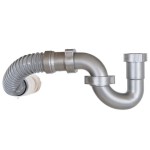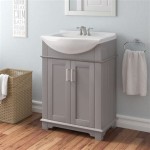The Ultimate Guide to Choosing the Best Silicone Sealant for Bathroom Sinks
Keeping your bathroom sink clean and free from leaks is crucial for maintaining a hygienic and functional bathroom. Silicone sealant plays a vital role in protecting your sink by creating a waterproof barrier between the sink and the surrounding surfaces, preventing water seepage and mold growth.
However, with a wide range of silicone sealants available in the market, selecting the right one for your bathroom sink can be daunting. To help you make an informed decision, let's explore the essential aspects to consider when choosing the best silicone sealant for your bathroom sink:
1. Type of Silicone Sealant
There are primarily two types of silicone sealants: acetic cure and neutral cure. Acetic cure sealants release acetic acid fumes during the curing process, which can be irritating and may damage certain materials. Neutral cure sealants, on the other hand, do not release fumes and are generally considered safer and more versatile.
2. Durability and Longevity
The durability of the silicone sealant is paramount in ensuring long-lasting protection for your sink. Look for sealants that are resistant to water, UV radiation, and chemicals, which commonly come into contact with bathroom sinks. A sealant with high tensile strength will withstand expansion and contraction due to temperature changes, preventing cracking or peeling.
3. Adhesion Properties
The ability of the silicone sealant to adhere to both the sink and the surrounding surfaces is crucial. Choose a sealant that is specifically designed for use on ceramic, porcelain, or other materials commonly found in bathroom sinks.
4. Flexibility
Since bathroom sinks are subject to movement and vibrations, the silicone sealant should be flexible enough to accommodate slight shifts without breaking. A flexible sealant will prevent water from penetrating the gaps, even under stress.
5. Mold Resistance
Moisture in bathrooms can foster mold growth. Choose a silicone sealant that is mold-resistant or has antimicrobial properties. This will help prevent the formation of unsightly and potentially harmful mold around your bathroom sink.
6. Ease of Application
Applying silicone sealant should be a hassle-free process. Look for sealants that come in easy-to-use cartridges or tubes. These often include a built-in applicator or nozzle for precise application. Some sealants may also have self-leveling properties, making the finishing process smoother and more efficient.
7. Aesthetics
While functionality is paramount, you may also want to consider the aesthetics of the silicone sealant. Choose a sealant that comes in a color that complements your bathroom decor. Some sealants are available in transparent or translucent options, allowing them to blend seamlessly with the surrounding surfaces.
Conclusion
Choosing the best silicone sealant for your bathroom sink requires careful consideration of factors such as the type of sealant, durability, adhesion properties, flexibility, mold resistance, ease of application, and aesthetics. By understanding these aspects, you can select a sealant that will provide lasting protection and enhance the functionality and appearance of your bathroom sink.
How To Seal A Sink Eys

Choosing The Best Caulk For Bathroom Sink Pep Up Home

Choosing The Best Caulk For Bathroom Sink Pep Up Home
The Best Silicone Sealants For Your Projects

Best Bathroom Sealant And Shower Sealants Reviews In 2024

Gorilla Waterproof Caulk Seal 100 Silicone Sealant Clear Glue
Grout Vs Silicone What S Best When Renovating Your Bathroom

Choosing The Best Caulk For Bathroom Sink Pep Up Home

Types Of Caulks And Sealants For Your Projects The Home Depot

Caulk Or Sealant Which Is Right For Your Bathtub Badeloft







